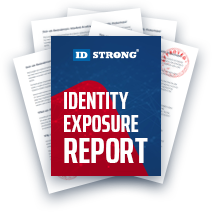Medical Identity Theft - What to do if it Happens to You?
Table of Contents
- By Brianne Savage
- Published: Jul 22, 2022
- Last Updated: Nov 23, 2023

In 2016, more than 16 million patient records were stolen in the US. Some papers fetched high prices, up to $1,000 for complete information. These numbers aren't surprising, as stolen medical information sells for 20 to 50 times more than financial information.
It is safe to say that medical identity theft can be very lucrative for those participating in it. Meanwhile, those who have had their information stolen and sold are out of luck unless they become more informed about:
- What medical identity theft is
- Possible examples of it happening
- How it happens to victims
- What to do if it happens to you
What is Medical Identity Theft?
Medical identity theft is very similar to traditional identity theft—someone takes another person’s information and uses it as their own, typically for illegal purposes.
What makes the two types of theft different is the end goal of the thief. Criminals can use identity theft to access money and services. Medical identity theft is either:
- The use of medical information by a malicious health provider looking to file fraudulent claims to insurance companies.
- The use of medical information to obtain additional health services.
Medical Identity Theft Description
Medical identity theft is when someone steals the personal information of someone else. Some information thieves can steal are a person’s name, social security number, health insurance account, policy numbers, or even a Medicare number.
Suppose a criminal is looking to use the information to bill a third party without rendering services. In that case, it is only noticeable if the victim pays close attention to their insurance and medical records.
However, if the criminal is looking for additional services for themselves, that is far more dangerous to both parties.
Some criminals will commit medical identity theft to see a doctor, get or buy prescription medications, receive medical equipment, or obtain other medical care.
Situations like this become problematic when the victim's and the criminal's medical information are contaminated. For example, say you go to the Emergency Room for treatment. You have a serious allergy to penicillin but your medical records are no longer accurate. They say you are not allergic to any medications, so they give you penicillin and you start struggling to breathe!
Warning Signs of Medical Identity Theft
Medical identity theft can look like different things based on the criminals’ information and what they are trying to accomplish. Medical identity theft can look like this:
- The victim randomly receives a bill from a clinic or insurance provider for services they did not get.
- Potentially life-threatening errors in the victim’s medical records.
- A malicious health care provider uses the victim’s information to file fraudulent insurance claims.
- An arrest warrant was issued for the victim—most likely because the thief used their information to buy large amounts of prescription medications.
- A plunging credit score and increased medical bills.
How can Medical Identity Theft Occur?
Medical identity theft can occur in a few ways, though one of the most common is when victims do not adequately hide or dispose of their personal information. Important data should always be shredded or “blacked out” before disposal, including:
- Health insurance cards or account numbers
- Prescription paperwork, bags, or bottles
- Billing statements from doctors or medical services
- Any explanation of benefits sent by a health insurance provider
Other medical identity theft can occur because victims are too trusting of people with malicious intent. Medical identity theft happens between family members half of the time. Additionally, nearly one in five health care employees have admitted to being happy to sell patient information for money.
What to do if Medical Identity Theft Happens to You
Review all Medical Records, Credit Reports, and Explanations of Benefits
If you believe you are a victim of medical identity theft, do not worry—there are tools in place to help. The first and most important thing is verifying that theft has occurred.
Victims can verify that there was theft by reviewing their medical records, credit reports, and explanation of benefits. If the theft has occurred, there will be discrepancies between what the victim knows is accurate and what the paperwork says.
- Discrepancies in medical records could look like extra information that does not apply to you or missing information like family history or prescription names.
- Discrepancies in credit reports could look like overdue bill payments. Some clinics run credit cards and render services before payment. If the thief uses a stolen credit card, the victims will not know until they see the bill in their statements, or are sent to collections for services they did not receive.
- Discrepancies in an explanation of benefits could look like used-up resources or monies—it could also look like a bill for medical equipment or prescriptions.
Get the Proper Authorities Involved
Once you are sure medical identity theft occurred, you need to make sure you file a police report. It is a critical step to ensure that you have proper documentation showing you did not get these services or have these treatments. Long-term effects of medical identity theft include things like being denied insurance or damage to your credit report. By taking the time to involve the authorities now, you can refute any claims against you in the future. This step is critical no matter what type of identity theft you face.
Gather All Medical Records, and Freeze Your Credit
Anyone who finds errors or inconsistencies between their paperwork and the paperwork from an institution should immediately request all medical records from the service provider. They should also seriously consider freezing their credit.
The idea behind gathering copies of all their medical records is twofold: it tells the victim the complete picture of what the provider sees but also gives the victim a starting point through which they can begin to hold any thieves accountable.
At the same time, freezing one’s credit is essential to avoid the damage a thief could cause from large purchases using the victim’s credit.
Report any Errors, Inconsistencies, or Suspicious Activity
Once errors are found, the victim must report the differences to the relevant sources. This will usually be a service provider, as medical records or explanations of benefits will typically be more informative than credit reports alone.
To make a report to your medical provider, it must:
- Be written
- Include a copy of the error-laden medical record
- Include an explanation of why it is an error (or similar proof)
(This process becomes easier if the victim sends the letter with a tracking number.) After being notified, the health provider must respond within 30 days and inform other health care providers with the same error in their records.
Medical identity theft can happen to anyone—but knowing what the threat is, how it happens, and how to deal with it will help protect you and your family from any problems in the future.



















































































































